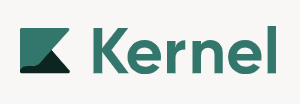
In March 2024’s What’s been happening in the markets article we explain InvestNow’s new Vanguard fees, compare Kernel’s new savings account to competing products, and explore what we should be doing in response to the recession.
This article covers:
1. Product updates
2. Market Movements
3. What we’ve been up to
1. Product updates
InvestNow Vanguard transaction fee

From 25 March 2024, InvestNow began to charge a 0.30% transaction fee for buying units in the two Vanguard funds available on the platform, to cover the costs associated with offering them:
- Vanguard International Shares Select Exclusions Index Fund
- Vanguard International Shares Select Exclusions Index Fund (NZD Hedged)
There were previously no transaction fees for these Vanguard funds. There has been a little bit of confusion around the changes, so here’s a few key facts to keep in mind:
- Sell orders – There continues to be no transaction fee on sell orders for these funds.
- Other funds on InvestNow – The only other funds on the InvestNow platform which have transaction fees are the Foundation Series Total World and US 500 funds. The transaction fee of 0.50% on buys AND sells for these funds remain unchanged. No other funds on InvestNow (apart from the above Vanguard and Foundation Series funds) have transaction fees, nor are having transaction fees introduced.
- Spreads – These transaction fees are different to spreads. Spreads are applied by a fund manager to cover the costs of buying and selling the underlying assets of a fund. Transaction fees are charged by the investment platform you invest through (in this case InvestNow). The spreads for the Vanguard funds are 0.07% for the unhedged fund and 0.08% for the hedged fund, and are not changing.
- Management fees – The management fees (0.20% for the unhedged fund and 0.26% for the hedged fund) are not changing either.
Further Reading:
– A beginner’s guide to investment fees – Management fees, transaction fees, and more
The new transaction fee makes the Vanguard funds a lot less attractive, but fortunately over the years there have been a growing number of alternative global shares index funds to invest in such as:
- Foundation Series Total World (has a higher 0.50% transaction fee, but lower 0.07% management fee)
- Kernel Global ESG
- Simplicity Global Share
- Russell Sustainable Global Shares
- Vanguard Total World ETF (VT) or a similar ETF listed on the US market.
These alternatives are more tax efficient and just as cheap as Vanguard’s funds (for example, Kernel’s global funds which have a management fee of 0.25% or Simplicity’s global funds which have a fee of 0.15%). So while the Vanguard funds were attractive when they launched a few years ago (when there was a lot less competition), we don’t think they’re that compelling anymore (even before this transaction fee was announced). Maybe this new fee will be the catalyst for investors to reassess and potentially invest in a more attractive alternative.
Further Reading:
– What’s the best global shares index fund in 2022?
Kernel reveals their Smart Saver rate

Last month we revealed that Kernel was launching a new on call “Smart Saver” product. Now Kernel have announced the interest rate for this account which launches in April. The rate will initially be 4.80% (which is subject to change), and any money deposited into this account is held with a NZ registered bank (rather than Kernel themselves).
Smart Saver vs other on call savings products
Here’s how Kernel Smart Saver compares to other high interest rate on call savings products:
- Squirrel On Call 5.25%
- Booster Savvy 5.00%^
- Heartland Digital Saver 5.00%*
- Kernel Smart Saver 4.80%
- Sharesies Save 4.60%
- Heartland Direct Call 4.60%
- Kiwibank Online 4.50%^
^Available as a PIE
*Heartland Digital Saver charges a $4 withdrawal fee if you make more than one withdrawal per month.
While Kernel Smart Saver doesn’t have the most competitive interest rate, it beats Sharesies Save as well as on call rates offered by the major banks. Additionally Kernel’s product has the following benefits over a number of other savings products:
- No fees for depositing or withdrawing money (unlike Heartland Digital Saver which has the above mentioned withdrawal fees).
- No penalties when you withdraw your money (unlike bonus saver accounts which reduce the amount if interest you earn if you make a withdrawal or fail to increase your balance during the month).
- No lock in period for your money (unlike term deposits or notice saver accounts).
Though you could argue that Squirrel On-Call and Booster Savvy are better products, as they also come with the above benefits but have higher interest rates.
Smart Saver vs Kernel’s other savings products
Smart Saver sits alongside the Cash Plus Fund in Kernel’s suite of savings/short-term investing options. The Cash Plus Fund is an actively managed fund invested in a diversified but slightly riskier range of assets (including bonds and floating rate notes), whereas Smart Saver is simply a deposit with a bank. As a result the Cash Plus Fund offers a higher yield and PIE status for better tax efficiency, but takes slightly longer to withdraw your money from and has a management fee of 0.25% p.a.
Kernel’s old “Save” 34 day notice saver account is no longer available and has been replaced by Smart Saver. Those wanting the higher interest rate of a notice saver account (and are happy with the notice period to withdraw your money) need not worry – You can instead invest via Heartland Bank, whose 32 day notice saver currently has an interest rate of 5.50%.
Kernel NZ bond funds

Kernel has now made 3 new NZ bond funds available to invest in. Unlike most other Kernel funds, these bond funds are actively managed. The options are:
- NZ Bond (0.40% management fee)
- March 2027 NZ Bond (0.50%)
- March 2029 NZ Bond (0.50%)
The March 2027 and 2029 funds are quite unique funds in that they have maturity dates associated with them. For example, the March 2027 NZ Bond Fund invests in bond issues that mature around March 2027. This makes these funds somewhat comparable to a term deposit maturing in 3 years’ and 5 years’ time. However, you have the ability to withdraw your money early and without penalties if needed (unlike term deposits where your money is generally locked in for the full term).
These NZ bond funds join Kernel’s US Bond Fund which launched earlier in the year. These bond funds currently aren’t available in Kernel’s KiwiSaver scheme.
Sharesies updates

As usual, Sharesies has been busy adding new features to their platform. This month we have:
- New KiwiSaver base fund – The Milford Aggressive Fund is now available as a base fund in Sharesies’ KiwiSaver scheme. This fills a gap in their offering where previously only Conservative, Balanced, and Growth base funds were available.
- OTC shares now available – There are shares that aren’t listed on a US exchange, and are largely foreign non-US companies.
- US live pricing – By default the share prices you see on Sharesies are delayed by 20 minutes. You now have the option of getting live pricing data for US shares if you subscribe to their $15 monthly plan (previously this plan only included NZX live pricing).
Further Reading:
– Sharesies KiwiSaver review – Switch or approach with caution?
2. Market Movements
Here’s how the markets have performed in March 2024 (as at 28 March), in both their local currencies and in NZ dollar terms:
| Local currency | NZD | |
| NZ shares (S&P/NZX 50) | 2.29% | 2.29% |
| Australia shares (S&P/ASX 200) | 1.57% | 3.51% |
| US shares (S&P 500) | 2.99% | 4.37% |
| Japan shares (Nikkei 225) | 4.08% | 4.61% |
| UK shares (FTSE 100) | 3.96% | 5.48% |
| Bitcoin | 12.56% | 14.08% |
March has been a good month for the markets, especially for Japanese shares, US shares, and Bitcoin which has continued their strong runs from earlier months of 2024. Year-to-date performance for these markets are below:
| Local currency | NZD | |
| NZ shares (S&P/NZX 50) | 2.04% | 2.04% |
| Australia shares (S&P/ASX 200) | 3.01% | 3.98% |
| US shares (S&P 500) | 10.04% | 15.79% |
| Japan shares (Nikkei 225) | 21.81% | 19.65% |
| UK shares (FTSE 100) | 2.57% | 7.16% |
| Bitcoin | 62.85% | 71.37% |
Recession is back
New Zealand has entered into a technical recession, represented by two consecutive quarters of GDP decline. In this case, GDP fell 0.3% in the quarter to September 2023, then 0.1% in the quarter to December 2023. Sound familiar? We also had a recession last year which we wrote about in June 2023, where GDP was negative in the December 2022 and March 2023 quarters.
| Quarter ending | Quarterly GDP Growth |
| December 2023 | -0.1% |
| September 2023 | -0.3% |
| June 2023 | +0.5% |
| March 2023 | -0.3% |
| December 2022 | -0.4% |
| September 2022 | +1.8% |
Seeing the country bounce in and out of recessions naturally raises some concerns. But our key points on what to do in a recession remain the same:
- There is no exact playbook for what to do in a recession, because every recession is different. No one knows exactly what will happen next, whose jobs will be lost, whether conditions will get worse and become a long and severe recession, or whether it’ll be a short and mild one.
- The fact that we’re in a recession might provide some motivation to review your budget, cut expenses, and update your CV. Most importantly you should have an emergency fund – Money you put aside in a safe and easy to access place for any unexpected expenses or life events (like losing your job). However, this is something you should have regardless of whether we’re in a recession or not. Things like job losses can occur at anytime, not necessarily during a recession.
- Many people think that the sharemarket is going to go down now that we’re in a recession. The problem is that this isn’t necessarily the case (like this month where NZ shares actually went up!). That’s because a recession is based on backwards looking GDP data (i.e. how the economy performed in the past), while the sharemarket is forward looking, moving up and down based on what people will think will happen in the future.
- There is no crystal ball to tell what’ll happen next to the sharemarkets. As long as you’re investing long-term in a well diversified portfolio, and shares are the right asset class for you, it’s not a good idea to time the market or constantly switch strategies. If you stay out of the market because you’re scared the recession will hurt its performance, you might miss out if the market keeps going up.
Overall, in a recession you should stay the course – Keep investing and continue to have money set aside for emergencies regardless of what’s happening in the economy. There’s a lot of fear and uncertainty out there, and it’s understandable to feel the need to take action and prepare. But often it’s investors who stay calm and stick to their plan who get the best results.
3. What we’ve been up to
While February is reporting season for many New Zealand companies, March could be considered dividend season, where lots of companies are paying out their dividends. This month we earned around $1,050 from our NZX listed companies, but we don’t get too excited about them. While dividends are an easy way to recognise the positive difference our investments are making to our financial position, they’re just one part of our investment returns, and chasing high dividends often comes at the expense of capital gains. A well diversified portfolio should ideally have a mix of dividend paying AND high growth companies (and a good way to achieve this is to invest in a broad market index fund).
Further Reading:
– Investing for passive income – The danger with dividends
In April we have tax time to look forward to. 31 March is the end of the tax year, so early April is tax time for any PIE funds we’ve invested in – This includes our KiwiSaver funds and our non-KiwiSaver Kernel funds. Kernel will calculate our tax liability for each fund, which for us will total around $3,000. We can then pay this tax either by:
- Depositing money into the platform
- Selling off units in our funds to raise the required cash
- Have Kernel automatically sell off units from our largest holding to get the cash (this is what happens by default for our KiwiSaver funds)
Though this tax process may differ from one platform to another, and will definitely look different if you’re investing in other types of assets like FIFs. The article below provides an overview of the different investment tax rules if you’re interested.
Further Reading:
– What taxes do you need to pay on your investments in New Zealand?
Also in April our Kernel index funds will be paying out distributions. Though similar to dividends, earning these distributions aren’t the primary reason we invest, but rather they form just one part of our returns alongside capital gains.
Outside of investing we had a pie and a croissant from Beabea’s Bakery in Westmere, got over $1,000 of maintenance done on our car (totally wiping out our dividend gains 😂), and cooked some awesome air fryer popcorn chicken using this recipe (skip the basil as it doesn’t work well in an air fryer).

Thanks for reading and your ongoing support!
Follow Money King NZ
Join over 7,500 subscribers for more investing content:
Disclaimer
The content of this article is based on Money King NZ’s opinion and should not be considered financial advice. The information should never be used without first assessing your own personal and financial situation, and conducting your own research. You may wish to consult with an authorised financial adviser before making any investment decisions.
Hi,
If I’m looking to invest in index funds, is it simply better to do this myself on a platform such as IBKR, or would you still recommend going through companies such as Kernel or Smartshares?
Firstly it depends on which specific index funds you’re after. Some funds will only be available through IBKR, some will only be available through Kernel and Smartshares.
But if there’s a fund available on both platforms (e.g. an S&P 500 fund), you may want to compare things like fees between the two. On IBKR, the index funds tend to have cheaper ongoing management fees, but higher transaction costs in terms of brokerage and FX fees. On Kernel, you’ll have higher management fees, but no transaction fees. So you may need to do some maths to determine which is the cheaper way to invest the amount you want.
You might also want to consider factors like tax, user friendliness etc. The following article may help https://moneykingnz.com/whats-the-best-sp-500-index-fund-in-2022/
I see the Foundation Series TWF and US500 funds are both multi-rate PIEs – so good options for children where their PIR is likely 10.5%, but possibly not beneficial for someone whose PIR is 33-39%. Do you have any recommendations for listed PIEs on InvestNow that are taxed at 28%?
The maximum tax rate for multi-rate PIEs is 28%
Thanks, I must have misread something. So just to confirm, a multi-rate PIE is taxed at your PIR, up to a max of 28%?
Yes, the PIR rates are 10.5%, 17.5%, and 28%
hi,
just want to know which is better investing in the kernel smart save or in kernel cash fund for savings? ]
please do advise
thanks